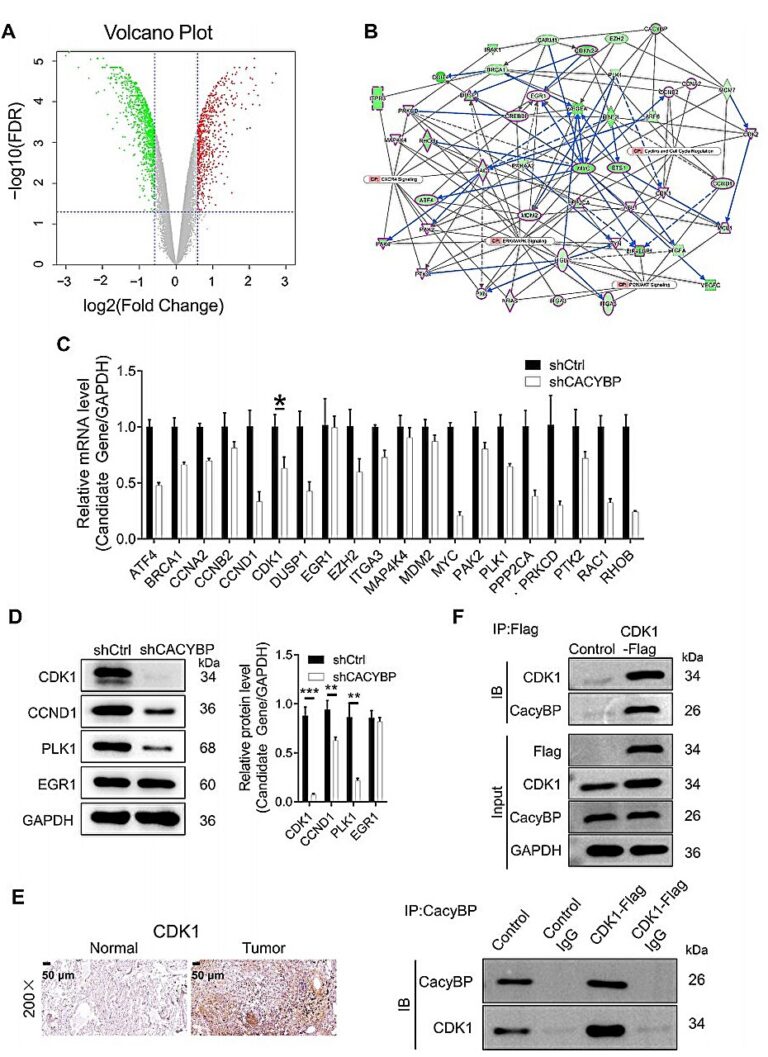Scientists have uncovered a molecular “on–off” switch that helps lung adenocarcinoma—the most common form of lung cancer—grow and spread. The discovery pinpoints the protein calcyclin‑binding protein (CACYBP) as a key driver of tumor activity and suggests that blocking it could improve outcomes for patients who fail to benefit from current drugs. The study is published in the journal Biomolecules and Biomedicine.
Subscribe to our newsletter for the latest sci-tech news updates.
Non‑small‑cell lung cancer (NSCLC) causes the majority of lung‑cancer deaths, and the adenocarcinoma subtype accounts for roughly 60% of NSCLC cases. Because early‑stage LUAD rarely produces symptoms, most patients are diagnosed late, when surgery is no longer curative. Targeted therapies and immunotherapy have extended life for some, yet resistance and non‑response remain common, underscoring the need for new molecular targets.
Researchers from Southern Medical University analyzed tumor samples, public RNA‑sequencing databases, cultured cells and mouse models to examine CACYBP’s role in LUAD.
- Overactive switch: Tumor tissues contained significantly higher levels of CACYBP than healthy lung tissue.
- Worse outlook: Patients whose tumors expressed more CACYBP had more advanced disease and shorter survival.
- Tumor brake: Silencing CACYBP in two LUAD cell lines curbed cell growth, blocked migration and triggered cell death; implanted tumors in mice also shrank.
- Mechanism mapped: CACYBP binds and boosts the cell‑cycle enzyme CDK1, which then activates the PI3K/AKT pathway—one of cancer’s major growth circuits.
“CACYBP appears to sit at the top of a cascade that keeps LUAD cells dividing,” said senior author Dr. Ying‑Jie Wen. “Turning that switch off may give existing therapies a much better shot at working.”
Why it matters:
- Therapeutic target—Neither CACYBP nor CDK1 is directly addressed by current LUAD drugs. Inhibitors, RNAi approaches or antibody therapies aimed at CACYBP could complement immunotherapy or EGFR/ALK inhibitors.
- Biomarker potential—Because CACYBP levels rise with tumor stage, a simple biopsy test might help predict prognosis or identify patients suited for CACYBP‑directed combinations.
- Mechanistic insight—Linking CACYBP to CDK1 and PI3K/AKT clarifies how LUAD cells accelerate their own growth, offering new angles for drug development.
The work relied on gene‑silencing tools rather than clinical‑grade drugs, and the exact binding site between CACYBP and CDK1 is still unknown. Tumor diversity also means results must be confirmed in larger, multi‑center cohorts.
The team now plans to:
- Map the CACYBP‑CDK1 interface to guide small‑molecule design.
- Test drug combinations that pair CACYBP or CDK1 blockade with PI3K/AKT inhibitors.
- Validate findings in patient‑derived organoids and metastatic samples.
If future trials bear out these findings, a CACYBP‑targeted therapy could close critical gaps left by today’s treatments and deliver longer‑lasting control of lung adenocarcinoma. For the millions living with this stealth disease, that would mark a decisive step forward.
More information: Ge Wen et al, Silencing CACYBP suppresses lung adenocarcinoma growth via CDK1 inhibition, Biomolecules and Biomedicine (2025). DOI: 10.17305/bb.2025.11849
Provided by Association of Basic Medical Sciences of FBIH
This story was originally published on Medical Xpress.

